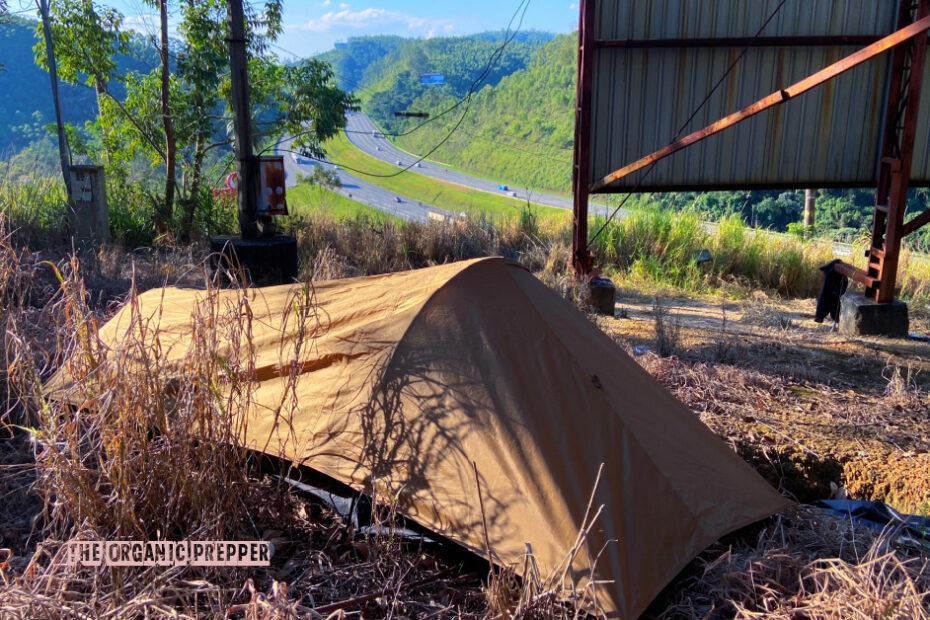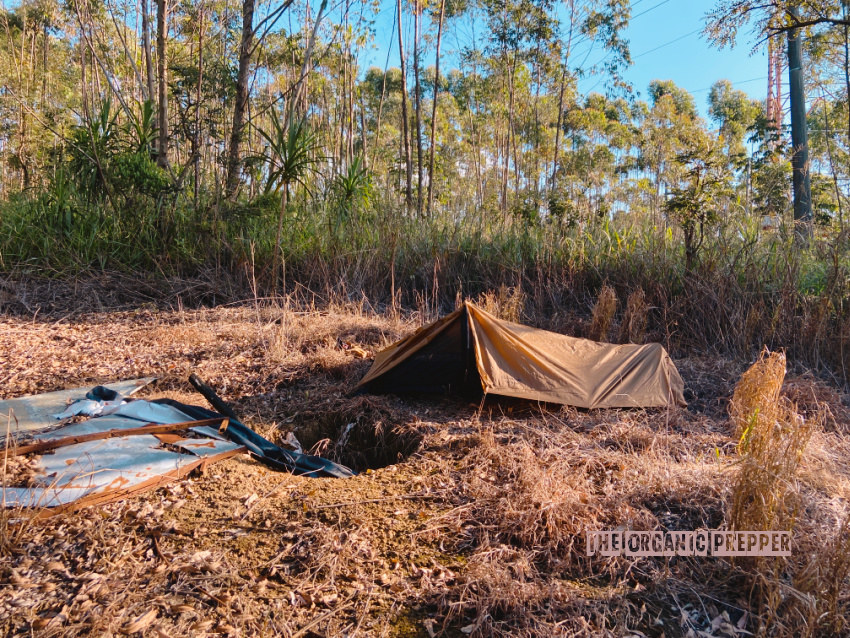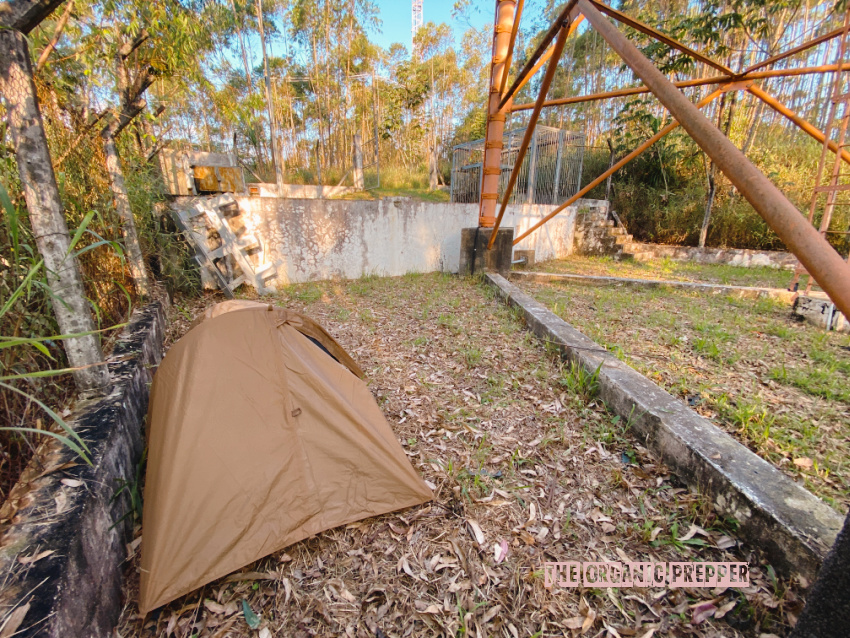[ad_1]
(Psst: The FTC wants me to remind you that this website contains affiliate links. That means if you make a purchase from a link you click on, I might receive a small commission. This does not increase the price you’ll pay for that item nor does it decrease the awesomeness of the item. ~ Daisy)
By the author of Street Survivalism: A Practical Training Guide To Life In The City and The Ultimate Survival Gear Handbook
Camping, backpacking, and an outdoor overnighter are time-proven activities to build fitness, stamina, confidence, self-reliance, and outdoor survival skills. It’s not for everyone, but most people I see trying it get addicted. The feelings of liberty and independence, the joys and thrills of being in the wilderness (and even the struggles), and the companionship are hard to let go of.
Those attributes and skills have a place in preparedness, undeniably. But even if you don’t see yourself bugging out into the woods if the SHTF, it’s still a great exercise, a much better way to spend time than binge-watching series on Netflix or scrolling on social media.
However, hitting the trail or going camping with the desired frequency may not be practical for the average urban dweller with a family, work, and other life commitments.
Introducing the outdoor overnighter.
An outdoor overnighter is a quick and short outing that works as an excellent alternative for those with limited time, fitness, and budget to experience the outdoors, get challenged, and make some achievements.
That’s my case, and maybe yours, too. I still do longer trips, bug-out dry runs, and other outdoor activities whenever I can, but during specific periods I may be forced to put that must aside for one reason or another. A quick trip that fits into a regular weekend or midweek holiday helps keep my outdoor spirit alive and sharpens my skills.
The upsides of an outdoor overnighter
Here are some other pros:
Low investment
The logistical and financial requirements to spend a night or two out backpacking and stealth camping closer to home make overnighters accessible and somewhat sustainable. Since I started doing these, my overall time spent outdoors has increased while my expenditure has remained stable.
Great to develop and fine-tune outdoor techniques
These short trips can be used to master or hone various survival skills, many of which can only be practiced in the wilderness or semi-rural settings to provide a much more complete experience. Things like starting fires with different methods (or in challenging conditions), building shelters and water catchment systems, navigation, orienteering, trapping and foraging, etc.
Detox and slow down
I live in an apartment building smack dab in the middle of a big, crazy city. It’s as noisy, frantic, polluted, and overcrowded as other metropoles. I must get away from that and into nature as often as possible to slow down, reflect, and recharge.
Build fitness
And some toughness, too. A quick out-and-back weekend walk into the woods can still be good exercise, especially if done frequently and with a backpack. Plus, we get some exposure to sun, wind, rain, and nature.
Can be done in the city
When I was a kid in the 1970s and 80s, we’d go into large undeveloped areas near my home to build cabins and tents, traps, hunt small animals, and make fires. We’d fight off intruders and wage war against competing groups. It was all fun and games.
Thanks to property development, those areas are almost nonexistent, and city camping is prohibited, as it is in US cities and most other countries. Despite that, stealth camping is more common than people think, despite involving violating a series of laws and social norms. Enforcement requires detection, and the homelessness crisis makes staying on the streets the only alternative for millions everywhere, further blurring these lines.
Is stealth camping an option for you?
I have been stealth camping in my city for over a decade, mostly in parks and forested areas such as bike routes and other public green lands. I also conduct small groups as part of the survival course I promote here (that’s different from the street survival training outlined in my book, which consists of finding safe shelters and living like a homeless person).
You should decide whether that’s an option because it’s also a matter of location: stealth camping in parks and other areas is more challenging (or risky) in some places than it is in others. I suggest researching beforehand or finding a group already into it if you’d like to go that route.
Outdoor overnighters require less gear and less time
As mentioned, overnighters require significantly less gear, supplies, and free time than “traditional” excursions.
However, as with any outdoor activity, it’s still crucial to stay protected from the elements and have some basics covered, such as lighting and first aid. Also, there’s some basic research and planning involved to ensure a successful outing:
Equipment
The list of equipment must include the basics for a safe, protected, and relatively comfortable overnight in the outdoors:
- A shelter
- Adequate sleeping gear for the weather
- Light source(s)
- A small first-aid kit just in case
- Other items include a knife, some cordage, and a lighter.
Since it’s a short trip and (usually) not too distant from home, there’s no need to bring lots of water, extra food, or multiple pieces of clothes, just enough for the duration. Packing light is another big plus of overnighters. I dress in layers and usually sleep with whatever I’m wearing. If something happens, I deal with it.
Other than that, any extras depend on secondary objectives. For instance, if the goal is to practice some skill, bring the tools or gear needed (or improvise).
Shelter
It may vary according to the settings and conditions. If there are trees or other structures, such as an old cell antenna, a hammock with a tarp or rainfly can be an excellent option to rest protected from weather and crawlies.
A tent, bivvy sac (or bivvy tent such as the Snugpack Ionosphere or one of its imitations) is a good, rugged, compact, and relatively lightweight one-person shelter option for dry or even stormy conditions.
Food
That’s open, do as you please. I’ve done everything from total fasting to full-gourmet overnighters with friends and alone. Back in the day, I used to go for the basic, rough-and-tough approach when going to the wilderness. However, as I get older, I find myself indulging in small pleasures more and more when I’m in nature.
For instance, I’ll take my small coffee presser for an authentic espresso in the morning or some decent freeze-dried pasta a la bolognese cooked hot for dinner. Or just a nice cigar to enjoy the sunset while chatting over the HT if I’m alone.
Choosing the settings.
There are hundreds of options for overnighters in and around any city. Almost any forested or brushy spot near roads and highways, hidden from eyes, is a potential stealth camping spot for overnighters. Most cities have low-traffic bike lanes, less visited linear parks, and other green areas where it’s possible to find a spot for a safe and undisturbed overnight. Use your creativity and explore potential campsites in advance.
Here are a few ideas and tips:
I search Google Maps for gas stations and road stops; then I look for trails or grassy spots leading to nearby hills, embankments, on-ramps, etc.
Abandoned antenna constructions, under roadside billboards, and others (see images) are great for overnighters. These usually have low traffic yet cleared or semi-cleared maintenance trails or concrete rain ditches and collectors leading to them, which can be a plus.
The downside of camping near busy roads is traffic noise, which can be pretty bad when trying to sleep at night. To counter that, set camp behind bushes or on the opposite side of the hill, if possible.
It’s OK to do a scouting visit to see the conditions before going for real if you don’t know the roads and places well already. Around here are dozens of roads leaving town, and about twenty miles or so from the city limit, it’s already woodland, reforested, or semi-rural in most of them.
I’ll get to the gas station or road stop and look for the trailhead or climb wherever I can to reach the desired spot.
How to get started
Below I list a few more practical tips to help first-timers:
- If it’s the first time or I’m not sure about the conditions, I’ll arrive and set camp before sunset (also to enjoy the time and do whatever I want to do). That’s my conduct, whether stealth camping in urban areas or the wilderness.
- Depending on the settings of choice, I’ll scan the place and immediate surroundings for needles, multiple fires, discarded packages, food, bottles, or cans, and any suspicious signs, particularly of unwanted activity. That means the place is “visited,” and someone or a group can show up at any time. I may still camp in the area, but at a distance and well hidden.
- I always suggest aiming for the lowest-profile and most discreet site and shelter possible. Whether in the city or the wilderness, I’ll do my best to ensure I’m as hidden from view as possible, both for safety reasons and to practice the principles of camouflaging and stealthiness.
- Avoid trespassing. Even if you find a well-hidden spot inside a property, away from houses or any construction, dogs can detect human presence from a distance and sound the alarm, even at night. Roadside green areas are public and mostly fine and safe for overnighters.
- Avoiding busy jogging/running trails in the suburbs and public parks is also a good idea. Camping is usually forbidden in these areas, and users tend to be strict and call the authorities, fearing it’s a group of homeless or drug users setting camp and littering their favorite spots.
- If in doubt: the secret to remaining undetected is waking up and taking off early, preferably before 5 AM. Almost no one goes out at that time, in the city, rural areas, or the woods. I don’t always follow that rule, I admit (I like to take my time and have a decent breakfast watching the sun rise), but the few times I got caught in all these years, I was still camped after 7 or 8 AM.
Are you going to give it a try?
Outdoor overnighters are a quick, fun way to keep in touch with the wilderness and work on survival skills. Don’t overcomplicate it: just grab some gear, invite some friends, search for a spot, and hit the road.
Have you ever done this kind of camping? What is your favorite place to go for an outdoor overnighter? Is this something you would consider or not? Do you have any tips to add?
Let’s talk about it in the comments section.
About Fabian
Fabian Ommar is a 50-year-old middle-class worker living in São Paulo, Brazil. Far from being the super-tactical or highly trained military survivor type, he is the average joe who since his youth has been involved with self-reliance and outdoor activities and the practical side of balancing life between a big city and rural/wilderness settings. Since the 2008 world economic crisis, he has been training and helping others in his area to become better prepared for the “constant, slow-burning SHTF” of living in a 3rd world country.
Fabian’s ebook, Street Survivalism: A Practical Training Guide To Life In The City , is a practical training method for common city dwellers based on the lifestyle of the homeless (real-life survivors) to be more psychologically, mentally, and physically prepared to deal with the harsh reality of the streets during normal or difficult times. He’s also the author of The Ultimate Survival Gear Handbook.
You can follow Fabian on Instagram @stoicsurvivor
[ad_2]
Source link


